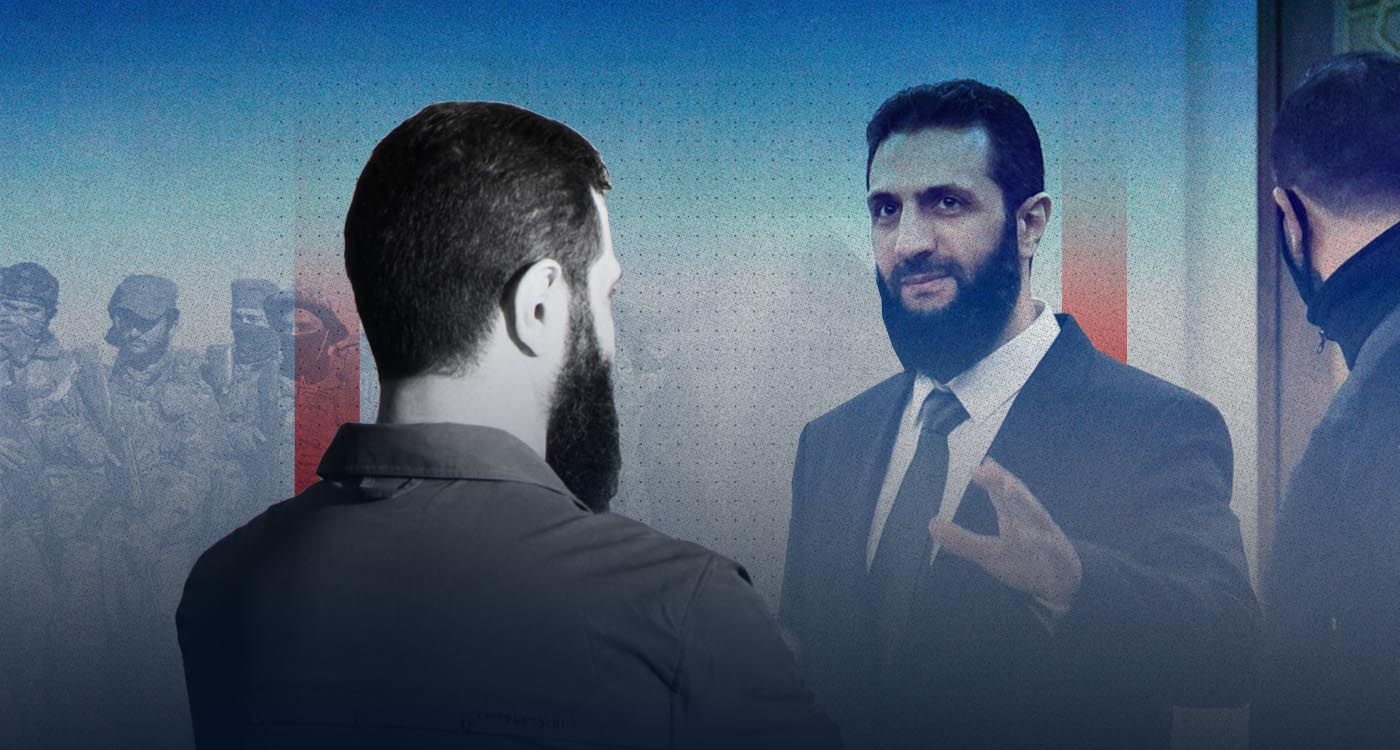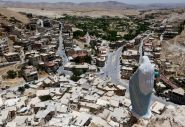- Home
- Highlights
- HTS: The Syrian Salvation Government and the Formation of a Proto-State

©This is Beirut
Before gaining control of significant parts of Syria following a swift assault on Bashar al-Assad’s forces, Hay’at Tahrir al-Sham (HTS) had spent several years establishing a proto-state model in the region of Idlib. This experiment in governance mirrored the group’s ideological transformation over time.
The Takeover of the Idlib Region
Idlib has long served as a crucial refuge and rallying point for factions opposed to Bashar al-Assad. While Assad’s regime, with support from Russia, Iran and Hezbollah, gradually reclaimed territories in eastern and southern Syria, various agreements allowed rebel groups to relocate to Idlib, turning the region into a key opposition stronghold.
Initially, local councils and factions like the Free Syrian Army (FSA) and Ahrar al-Sham governed Idlib. However, in early 2017, six jihadist groups, including the al-Nusra Front (Jabhat al-Nusra), after its break with al-Qaeda, merged to form HTS. Over time, HTS consolidated control over the region.
In November 2017, HTS established a political entity to govern its territory: the Syrian Salvation Government (SSG). The aim was to create a civilian institution to bolster HTS’s authority over northwestern Syria. Later that year, HTS seized the city of Idlib and the strategically significant Bab al-Hawa border crossing, which links Syria to Turkey. After two years of conflict, HTS neutralized rival factions and brought the last independent groups under its control, securing dominance over much of northwestern Syria by 2019.
“HTS established the SSG because it recognized that the insurgency could no longer function effectively in a fragmented, multipolar environment, where multiple factions formed their own fiefdoms and administrations,” explains Aymenn Jawad al-Tamimi, an expert on HTS. “The SSG was essentially designed as HTS’s civilian wing, allowing it to impose its hegemony over Idlib and its surrounding areas,” he adds. “Although many members and employees of the SSG were not directly affiliated with HTS, it is fair to describe it as HTS’s civilian administrative wing,” he continues.
Nevertheless, some Turkey-backed factions managed to remain outside HTS’s control. United under the Syrian National Army, these factions were primarily based in northern Aleppo and later in the Afrin region, following Turkey’s Operation Olive Branch (OOB) in 2018.
The Syrian Salvation Government
Once a haven for displaced individuals, the population of Idlib dramatically soared from 1.8 million in 2010 to over 4 million in subsequent years. This rapid growth posed a significant challenge for HTS, which sought to establish institutions to manage the expanding population.
The SSG served as the civilian executive arm of HTS, which, at least publicly, sought to avoid being seen as holding direct political power. Simultaneously, the Shura Council operated as an advisory body tasked with endorsing the SSG through a vote of confidence.
The SSG structure evolved over time. In its most recent form, it consisted of a prime minister (Mohammad al-Bashir) and 11 ministries: Interior, Justice, Economy, Agriculture, Information, Religious Affairs, Health, Education, Higher Education, Development, Local Administration and Environment.
“Local residents were widely represented within the administrative and governmental structures. Most of the ministers came from the same region, particularly from Idlib and ‘rif’ (countryside) Hama,” observes an HTS expert who requested anonymity. “It was clear that this was a local government, more akin to an expanded local council. All its ministers, except for one – the Minister of Education, Nazih al-Kadiri, a displaced person from ‘rif’ Damascus – were from the same region,” he adds.
According to Tamimi, the SSG’s institutional structure was essentially a more “civilian” duplication of the institutions previously established under Jabhat Fatah al-Sham and Jabhat al-Nusra. To effectively govern, the SSG also heavily relied on a network of local councils throughout Idlib and in the surrounding villages aligned with its authority.
Shifting Discourse to Appeal to the West
In an effort to gain broader international legitimacy, Abu Mohammad al-Jolani, former leader of Jabhat al-Nusra and the current head of HTS, began shifting his rhetoric. Moving away from hardline jihadist ideology, he adopted a more pragmatic and moderate stance, aiming to rebrand HTS as a credible alternative to Assad’s regime and to push for its removal from global terrorism lists. Al-Jolani also emphasized his group’s local roots, distancing it from the global jihadism it once embodied.
“The official HTS establishment marked a critical turning point in its image, distancing it from its Qaeda origins,” explains Tammy Palacios, a counter-terrorism analyst at the New Lines Institute, in an interview with This is Beirut. “Initially, al-Jolani’s public image retained traces of his previous style, but over time, he underwent a significant transformation – not just in his rhetoric, but in his appearance and the alliances he forged between 2018 and the present,” she adds.
As part of this transformation, HTS encouraged its members to adopt a more moderate rhetoric, advocating a flexible interpretation of Sharia law and urging more conciliatory interactions with the local population. Key changes included lifting bans on music in schools, relaxing strict dress codes for women, and reducing the role of the religious police. The group also permitted the reopening of several churches and allowed Christians to practice their faith, albeit with restrictions, such as silencing church bells and prohibiting public displays of crosses. However, this shift toward greater openness did not sit well with everyone.
Purge and Internal Tensions
Initially, HTS took a harsh stance against the Druze and Christian minorities in the region, seizing large swathes of land, which undermined the group’s international credibility. “Al-Jolani quickly recognized that the issue of minorities was both sensitive and crucial,” notes an expert on HTS.
“He urged the remaining Druze – many of whom had already fled – to reach out to their relatives and encourage them to return to their homes, which he had given back to them. Similarly, he allowed Christians to celebrate their religious holidays, despite backlash from certain HTS factions,” the expert adds.
This policy of “openness” angered the group’s most radical factions, as well as other extremist groups, who accused HTS of straying from its core Islamic principles. Critics broadly claimed that HTS had abandoned international jihad in favor of “nationalism” – focusing on local objectives and severing its ties with al-Qaeda, now represented by the Hourras al-Din organization. The group’s growing ties with Turkey also drew ire, with some asserting that Turkey should be fought, labeling its army as “apostate” or “secular.”
In response, al-Jolani initiated a purge of HTS’s most radical members. To this end, he established the High Council of Fatwa in March 2019, tasked with overseeing the issuing of fatwas within HTS and curbing the influence of both external and internal radical elements.
The purge was extensive, targeting even moderate figures who held influential positions among the fighters. “HTS sidelined individuals who were too rigid and unwilling to accept the group’s ideological shift, particularly Egyptian clerics who were staunch doctrinaires,” explains Thomas Pierret, a CNRS researcher and Syria specialist, to This is Beirut.
Although HTS formally distanced itself from jihadist ideology and restructured the SSG as a technocratic and civilian entity rather than a militant organization, its internal structure remains closely tied to the roots of Jabhat al-Nusra.
As Orwa Ajjoub observes in a long analysis published in 2024 for the Middle East Institute, “Leadership positions within HTS are largely determined by proximity to al-Jolani, which depends on members’ social capital, including tribal affiliations, regional influence, and popularity among fighters.” This has created a patronage system, where loyalty is rewarded with key positions, contracts, money and influence.
Tribal connections have become especially important to al-Jolani’s strategy. Middle East analyst Nicholas Heras, in an interview with Syria Direct in 2021, highlights that “HTS has made significant efforts to marry its senior members into influential and notable families in Idlib, which has given the group deep and lasting roots in the region’s sociopolitical framework.” This local integration has helped HTS solidify its control over the territory, prevent uprisings, and enhance its legitimacy.
Despite these efforts, the group is still viewed by some as having seized and maintained power in Idlib without genuine power-sharing with the broader population. Nevertheless, HTS has cleverly established a proto-state capable of effectively governing the region, with long-term ambitions to extend its control across Syria.
Read more




Comments